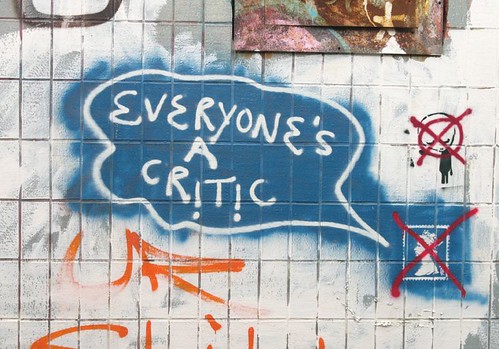 As a writer, I’ve been thinking lately about the future of literature. In 2002, the National Endowment for the Arts told us that literary reading was in dire straits, with fewer than half of adults reading poetry, fiction, or plays. The news improved by 2008, when the Census Bureau conducted “The Survey of Public Participation in the Arts” and found that literary reading had crept back up over fifty percent. But in these surveys, you’re a literary reader if you read a single book in the previous year. In a given year, the latest Harry Potter or Twilight alone could account for a significant number of readers.
As a writer, I’ve been thinking lately about the future of literature. In 2002, the National Endowment for the Arts told us that literary reading was in dire straits, with fewer than half of adults reading poetry, fiction, or plays. The news improved by 2008, when the Census Bureau conducted “The Survey of Public Participation in the Arts” and found that literary reading had crept back up over fifty percent. But in these surveys, you’re a literary reader if you read a single book in the previous year. In a given year, the latest Harry Potter or Twilight alone could account for a significant number of readers.
The rise of digital culture in the past few years has thrown many of us writers into a tizzy too. Nicholas Carr told us, in The Shallows last year, that the medium through which we access information is far more influential in the long run than the content itself. The new medium—the Internet and electronic reading devices—is changing our brains, the way we think, and the ways we read and write. Carr warns that our new technological habits could “drown out the refined perceptions, thoughts, and emotions that arise only through contemplation and reflection.” If we become enamored with the frenziedness, the refined experience of a poem could go unperceived. The novel could disappear as we lose the ability to pay attention to a sequence of events over hundreds of pages.
So I began this summer with a simmering panic and a handful of pressing questions. What are the reasons we write and read literary works? Will these reasons remain compelling now that we have other, perhaps less demanding, means—television, video games, blogs—for experiencing language, metaphor, plot, and character? If literary reading declines, who will read the books I have yet to write?
 I began my search for answers with Marjorie Garber’s The Use and Abuse of Literature (Pantheon, 2011) because I had enjoyed and recommended her previous books Patronizing the Arts and Academic Instincts, two slim volumes that cast sunshine on worrisome issues. Garber’s latest book is not nearly as clearly organized, focused, or cheery as those earlier works. Reviewers at Slate and The New York Times have already pointed to flaws, namely that she sets up false or unstable binaries and is overly professorial. But she is tackling large questions, like “What is literature?” Often, the answers are alternately slippery and sticky.
I began my search for answers with Marjorie Garber’s The Use and Abuse of Literature (Pantheon, 2011) because I had enjoyed and recommended her previous books Patronizing the Arts and Academic Instincts, two slim volumes that cast sunshine on worrisome issues. Garber’s latest book is not nearly as clearly organized, focused, or cheery as those earlier works. Reviewers at Slate and The New York Times have already pointed to flaws, namely that she sets up false or unstable binaries and is overly professorial. But she is tackling large questions, like “What is literature?” Often, the answers are alternately slippery and sticky.
Garber offers a useful account of the history of literary criticism and emphasizes that critical approaches shift. What we value about texts as readers, critics, and scholars changes over time. “The interpretation of literature is itself always in dialogue with its own past. The elements of philology, close reading, myth, allegory, image and symbol, history, biography, context, and reception (or, to employ another familiar formulation, emphasis upon the author, the text, or the reader) follow upon one another cyclically.” In other words, we don’t read the same way our mothers read. Garber also reacts against the recent rise of assessment practices in higher education, arguing that literary reading is distinct from interpretation in other fields. Literary readers don’t look at the world the same way social scientists do, and literary texts shouldn’t be reduced to sound bites.
Especially for academic insiders, there’s plenty to ponder in The Use and Abuse of Literature. I hadn’t thought about what the course titles “The Bible as Literature” or “Film and Literature” (as opposed to as literature) imply. Likewise, while I have thought a lot about close reading (Francine Prose’s Reading Like a Writer is a favorite of mine), I appreciate Garber’s attention to its history and uses in English studies. She covers a lot of interesting minutiae, and that adds up.
The oddest chapter is “Mixed Metaphors,” which attacks the work of George Lakoff and Mark Johnson. Garber notes shortcomings in their arguments about how we understand and articulate the world metaphorically. By the end, she admits that their work may be helpful in other fields, but “this kind of analysis is profoundly unuseful for the interpretation of literature.” I agree with Garber that Lakoff and Johnson may not provide a comprehensive theoretical apparatus for every field, but who does? And though Lakoff and Johnson may not provide literary critical approaches per se, it’s difficult to argue that human beings aren’t metaphorical thinkers or that literature doesn’t employ metaphor. Garber seems to throw a critical baby out with the metaphorical bathwater.
That said, The Use and Abuse of Literature began to answer my pressing questions about the future of literature. “Despite the gloomy prognosis,” Garber writes, “poems and poetry are alive and well today—in the classroom, the poetry magazine, the writing workshop, the lecture hall, the bookstore, on the Internet, and in the streets. The death of art is always being predicted somewhere, and is perhaps a necessary pronouncement to ensure the tangible edginess, the sense of delighted transgression, that comes with practicing a living and changing art or craft.” That’s what I wanted to hear: the death knell is really the alarm clock waking us up as scheduled. Garber’s meticulousness and wealth of examples give substance to her placation.
 Next, I moved to Why Literature? (Continuum, 2011) by Cristina Vischer Bruns. (Cristy is my department colleague so, initially, I was hesitant to read her book, for fear I would disagree with her take on some fundamental issue.) As opposed to Garber’s authoritative manner, Why Literature? exhibits the careful tone of a first book and a methodical working-through of relatively narrowly defined questions and topics in an introduction and four chapters.
Next, I moved to Why Literature? (Continuum, 2011) by Cristina Vischer Bruns. (Cristy is my department colleague so, initially, I was hesitant to read her book, for fear I would disagree with her take on some fundamental issue.) As opposed to Garber’s authoritative manner, Why Literature? exhibits the careful tone of a first book and a methodical working-through of relatively narrowly defined questions and topics in an introduction and four chapters.
Yet this book makes surprisingly bold claims. Unlike many academics, who one-up each other at every public opportunity, Bruns talks about her (and many teachers’) failure to promote literary reading. As she revealed her frustration with early classes, I recalled the first time I taught Jane Eyre, a favorite novel of mine that flopped with almost all my students. They didn’t get caught up in the story and didn’t understand why I did. Bruns names what underpinned my frustration of a decade ago: “the lack of conception of literary value that hinders students’ opportunities to experience literary reading as worthwhile, but also the scholarly approaches taken toward texts in recent decades which constrain those encounters.” It’s refreshing to see a scholar assert that the way academic insiders treat a text doesn’t align with why readers really love literature.
According to Bruns, the future of literary reading depends on reclaiming its value. “Literary reading,” she writes, “is valuable for individuals and for society because it functions as an especially effective occasion for re-working our conceptions of ourselves and others.” Literature is formative. That’s what separates it from other kinds of texts or other fields of study. Bruns goes on to discuss how immersion (getting caught up) and reflection (critical reading) are learned processes that book lovers use to appreciate a poem or novel. But each process can undermine the other, especially in the classroom setting, where passing a test may be a more overt goal than enjoying the story. Only continued practice can make these processes interdependent and effortless.
Bruns’s evaluation of the MLA Approaches to Teaching series is another bold move. Admittedly, she used a small sample, but what she found amazed me. In Approaches to Teaching Eliot’s Poetry and Plays, only six of twenty-five essays “suggest any kind of specific instructional practices—what teachers might have students do or might do with them in a class.” Bruns goes on to discuss how literary reading becomes endangered when a class is based entirely on lecture and when the students’ ability to immerse themselves in and reflect upon a text is assumed. Reading Bruns showed me why students can become comfortable reading SparkNotes instead of Jane Eyre.
The last chapter of Why Literature? offers practical applications for the classroom—or for anyone to develop reading skills and appreciation. It’s not comprehensive, of course, but specific examples Bruns draws from her own experiences as a reader and a teacher show how to talk about literary reading with students and friends. Nothing guarantees that every reader will have a formative experience with every book, but if literature is to flourish, we must create that possibility for readers and texts.
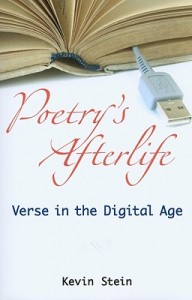 Poetry’s Afterlife (University of Michigan Press, 2010) by Kevin Stein, bolstered my new optimism about literature’s future. Like Bruns, Stein addresses some of the shortcomings of our educational practices when it comes to literary reading. In a chapter called “Why Kids Hate Poetry,” he openly admits, “Because we teach them to hate it.” Young children love poetry, but, according to Stein, high school makes them loathe it. Many high school teachers don’t bother with poetry at all, and others treat poems as “forms of penance and interrogation.” Moreover, he adds, “most teachers rely on someone else’s definition of the classics to entice students into appreciating poetry.” (Like SparkNotes, I wondered?) They also pick especially didactic poems to fit the test format.
Poetry’s Afterlife (University of Michigan Press, 2010) by Kevin Stein, bolstered my new optimism about literature’s future. Like Bruns, Stein addresses some of the shortcomings of our educational practices when it comes to literary reading. In a chapter called “Why Kids Hate Poetry,” he openly admits, “Because we teach them to hate it.” Young children love poetry, but, according to Stein, high school makes them loathe it. Many high school teachers don’t bother with poetry at all, and others treat poems as “forms of penance and interrogation.” Moreover, he adds, “most teachers rely on someone else’s definition of the classics to entice students into appreciating poetry.” (Like SparkNotes, I wondered?) They also pick especially didactic poems to fit the test format.
Stein knows what he’s talking about because, as Illinois Poet Laureate, he has visited schools across the state. Despite his assertions about the proliferation of poetry-loathing, he offers positive examples and suggestions throughout the book and has implemented some of them in his role as the state’s poet. Audio and video foster literary reading. Often, hearing a poem read aloud by the author makes a person want to read the printed poem. Talking with the poet about the poem and the writing process deepens a reader’s engagement and appreciation. Poetry’s Afterlife suggests there are really important reasons to read poetry: “It’s something closer to solace and communion, joy and revelation, some sustaining reason to click off the TV.” Experience communion or joy a few times, and you will probably want more.
In some chapters, Stein examines why he likes certain poets and how his top-ten list has evolved, the role of revision, and the fate of paper(s) in the digital age. The chapters that focus on poetry outside the academy are an important contribution to the conversation about literature’s future. “A Digital Poetry Playlist” is very optimistic about that future, pointing out that video and new media poetries are reinvigorating literature. The creation and reception of a poem is changing, and that gives poets new visions. I thought of Kate Greenstreet’s The Last 4 Things, which comes with a DVD featuring two short films; the online journal Blackbird; and some of the digital humanities projects I’ve seen over the last year. Stein points out that a different kind and level of interactivity and also evolution of a given text is newly possible. We have only just begun to explore digital possibilities as writers (and by extension, as readers).
Stein reads in schools, prisons, nursing homes, and wherever else will have him—and it turns out people want him. Sure, getting one kid to appreciate poetry doesn’t change the world or ensure a prosperous future for literary reading. But as Poetry’s Afterlife concludes:
If we will listen, we will hear poetry’s surprise hidden track regale us in the manner of a compact disc we think is done but is not. We will hear poetry’s music alive after its ostensible ending, song layered with and after silence. Poetry is dead. Long live poetry. Thus, it is the obligation of the practicing poet, laureate or otherwise, to incite in others and to embody in oneself poetry’s afterlife.
Literature’s death knell is actually just an empty track. There’s more, if you just wait a few seconds—and if you tell somebody else it’s there.
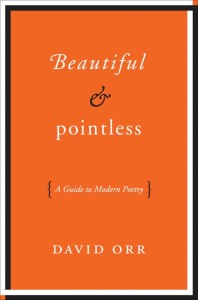 David Orr, author of Beautiful and Pointless (HarperCollins, 2011), doesn’t actually care about the death knell. His book “will not focus on events that may or may not have occurred ninety years ago that may or may not have lost an audience that poetry may or may not have possessed; nor will it attempt to determine whether poetry is dead or alive, comatose or just feeling a little woozy. Poetry may be any or all of those things.” Orr’s tone indicates straight away that he’s not writing for academic insiders or poets themselves (though he is, because we read these books, and he knows it). He is concerned with “the relationship that exists—right now, not fifty years ago—between contemporary poetry and general readers, as well as the kind of experiences that such readers can expect from modern writing, if they’re given a chance to relate to what they’re looking at.” He wants literature to succeed in the future.
David Orr, author of Beautiful and Pointless (HarperCollins, 2011), doesn’t actually care about the death knell. His book “will not focus on events that may or may not have occurred ninety years ago that may or may not have lost an audience that poetry may or may not have possessed; nor will it attempt to determine whether poetry is dead or alive, comatose or just feeling a little woozy. Poetry may be any or all of those things.” Orr’s tone indicates straight away that he’s not writing for academic insiders or poets themselves (though he is, because we read these books, and he knows it). He is concerned with “the relationship that exists—right now, not fifty years ago—between contemporary poetry and general readers, as well as the kind of experiences that such readers can expect from modern writing, if they’re given a chance to relate to what they’re looking at.” He wants literature to succeed in the future.
In a chapter about form, Orr gives a tongue-in-cheek summary of the history of American poetry over the last century (a summary that is even more entertaining when juxtaposed with Garber’s overview). He begins with the influence of traditional English forms; recaps modernism in a paragraph about poets sticking “random bits” of this, that, and the other thing into their poems; discusses the inexplicable rise of W. H. Auden and a reclamation of form; turns to the realization by poets that “they’d been caging the Inner Selves” and needed to be Beats or deep; describes the poetry of the 1980s (when I started taking it seriously) as neither here, nor there, and “the poetic equivalent to the Eagles”; summarizes in a paragraph the simultaneous emergence of New Formalists and Language Poets; and ends with today: “We have either a gorgeous mosaic or a big mess, depending upon whom you ask.” If you ask Kevin Stein (or me), it’s a gorgeous mosaic. Of course, for someone who isn’t a literary reader, it must look like a big mess (but is someone who doesn’t read much going to read this book?).
At times, Orr is incredibly funny, as when he helps his father, who has suffered a stroke, regain speech skills. Orr’s father struggled with pacing and emphasis, aspects of language poetry depends upon. Orr writes, “Here is something I learned very quickly: Do not attempt to get a stroke victim to read Hopkins.” If you’re a poetry lover, you’re chuckling aloud right now. And you can probably guess the poet to whose work Orr turned: “We did a little better with Robert Frost. Frost is one of my totem poets, not because he’s approachable, but because he is, as Louise Glück once put it, ‘demonically manipulative.’ No American poet has better understood the snares and sinkholes of our way of talking.”
 For those of us in the academy, Orr touches some nerves, not just by asserting that Frost is really good at something, but because he discusses the kinship between poetry and the university in a chapter titled “The Fishbowl.” As he puts it, “The difficulty with treating poetry as if it were a subsidiary of the academy isn’t so much that doing so risks turning poets into English professors, but that doing so risks turning them into second-rate English professors.” Ouch, that’s me he’s worried is second rate. He goes on to recount scandals in poetry contests, sticky problems with blurbs, and insider gossip. He acknowledges that poets and editors are mostly good people, and why should we expect the poetry universe to be very different from the real world?
For those of us in the academy, Orr touches some nerves, not just by asserting that Frost is really good at something, but because he discusses the kinship between poetry and the university in a chapter titled “The Fishbowl.” As he puts it, “The difficulty with treating poetry as if it were a subsidiary of the academy isn’t so much that doing so risks turning poets into English professors, but that doing so risks turning them into second-rate English professors.” Ouch, that’s me he’s worried is second rate. He goes on to recount scandals in poetry contests, sticky problems with blurbs, and insider gossip. He acknowledges that poets and editors are mostly good people, and why should we expect the poetry universe to be very different from the real world?
I appreciate a variety of poems and am glad other poets are doing things I’m not. Beautiful & Pointless appealed to me, on the whole, because it offered different reasons readers enjoy different poems. A Frost poem works for particular reasons and for particular readers. In his chapter “Ambition,” Orr discusses different ways we read different poets, including Jorie Graham, Geoffrey Hill, and Derek Walcott, whose work is described with words that conjure largesse, and Kay Ryan, whose style is quieter and deceptively small. (I agree with Katie Umans, in her review of Orr’s book, that Ryan is too easy an example and that a Poet Laureate can no longer be an iconoclast, but I like that Orr mentions poets whose books potential readers can find in the few physical bookstores that remain.) In the end, Orr notes, “There is no ‘true’ way to be ambitious, just as there’s no ‘proper’ way to write poetry; we exist in a flurry of possibilities that will bring to mind snowflakes or bullets, depending on your disposition.”
That variety both imperils and ensures the future of literary reading. There’s something for everyone, but a given reader isn’t going to like everything. Katie Umans’s review of Orr’s book is guided by the question of why she writes poetry, a good question that she finds Orr doesn’t answer. My question for Orr is about literary reading. Though I fear poetry gets packaged as one thing for readers beyond poets themselves, Orr answers that one of poetry’s strengths and appeals is its variety. When I saw Kevin Stein read several years ago, he noted that people who say they don’t like poetry feel comfortable dismissing the lot of it based on a few samples. Instead, he suggested that it’s like music; you may like jazz and not opera, and you may have a few favorite songs or groups.
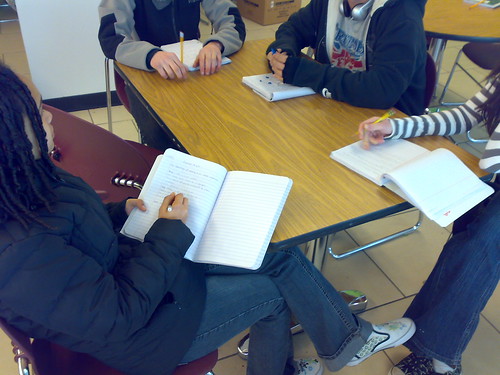 Having read these four books, I’m beginning to think that the future of literature depends upon people like me, Christina Bruns, and Kevin Stein, who teach college students. There are plenty of avid readers who don’t get a college degree in literature or an MFA, but creative writing programs, which have proliferated over the last three decades, are filled with people predisposed to appreciate writing and reading. The various reports on the state of literary reading indicate the under-thirty crowd doesn’t read much, but those of us who teach have a potential future audience sitting before us.
Having read these four books, I’m beginning to think that the future of literature depends upon people like me, Christina Bruns, and Kevin Stein, who teach college students. There are plenty of avid readers who don’t get a college degree in literature or an MFA, but creative writing programs, which have proliferated over the last three decades, are filled with people predisposed to appreciate writing and reading. The various reports on the state of literary reading indicate the under-thirty crowd doesn’t read much, but those of us who teach have a potential future audience sitting before us.
Recently on Fiction Writers Review, Cathy Day, Stephanie Vanderslice, and I talked about our responsibility as teachers. As Cathy put it there, “Creative writing programs, in their current manifestation, are conceived of as laboratories in which writers are cultivated, but I like to think that we’re also cultivating future readers and teachers and editors and bloggers and book reviewers and book buyers—citizens in the vast literary culture.” Maybe my greatest success as a teacher is the student who mentioned that, to her family’s bemusement, she put poetry books on her holiday wish list. You don’t need a degree to appreciate poems and stories, but my summer reading forced me to rethink my teaching goals. After all, if the English majors of this world don’t keep reading for a lifetime, who will?
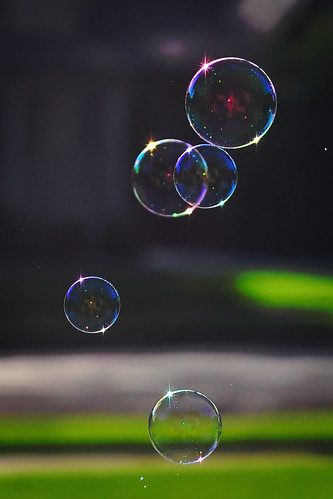 My reading—The Use and Abuse of Literature, Why Literature?, Poetry’s Afterlife, and Beautiful & Pointless—helped me to better understand why I read and write and better articulate a variety of compelling reasons anyone should engage with literature. I’m not sure any one of these books accomplished that completely, but together their arguments carry weight. No one thinks a literary golden age is around the corner, and many point out there never was a literature bubble (and therefore no collapse). Literary reading will survive because (if) some of us enjoy it deeply. Maybe it’s possible for more of us to love literature if we take the ideas in these books to heart, talk about them with others, and put them into practice.
My reading—The Use and Abuse of Literature, Why Literature?, Poetry’s Afterlife, and Beautiful & Pointless—helped me to better understand why I read and write and better articulate a variety of compelling reasons anyone should engage with literature. I’m not sure any one of these books accomplished that completely, but together their arguments carry weight. No one thinks a literary golden age is around the corner, and many point out there never was a literature bubble (and therefore no collapse). Literary reading will survive because (if) some of us enjoy it deeply. Maybe it’s possible for more of us to love literature if we take the ideas in these books to heart, talk about them with others, and put them into practice.
Further Links and Resources
- Here are the books discussed in this essay:
–Garber, Marjorie. The Use and Abuse of Literature. New York: Pantheon, 2011.
–Bruns, Cristina Vischer. Why Literature?: The Value of Literary Reading and What It Means for Teaching. New York: Continuum, 2011.
–Stein, Kevin. Poetry’s Afterlife: Verse in the Digital Age. Ann Arbor: University of Michigan Press, 2010.
–Orr, David. Beautiful & Pointless: A Guide to Modern Poetry. New York: HarperCollins, 2011. - Visit Anna Leahy’s website to learn more about her scholarship, or the blog she co-writes, Lofty Ambitions.
- Read Anna Leahy’s conversation with Stephanie Vanderslice and Cathy Day about creative writing pedagogy, here on Fiction Writers Review. This conversation appears in two parts: One / Two.
- Read Katie Umans’ essay “‘We have poets? Do they wear capes?’: A sort-of review of David Orr’s Beautiful and Pointless (and some meditations on poets and poetry)“—part of her column “Poetry for Prosers”—here on Fiction Writers Review.

